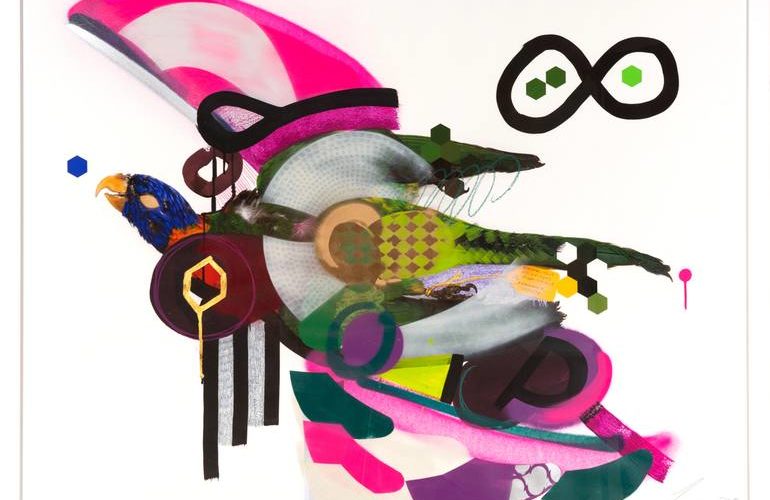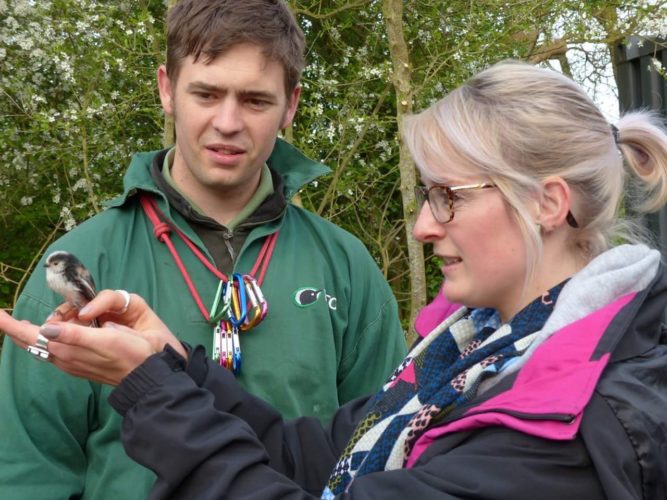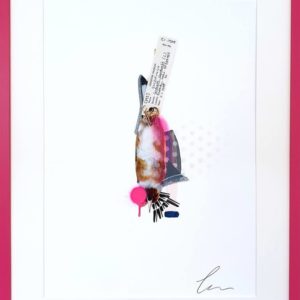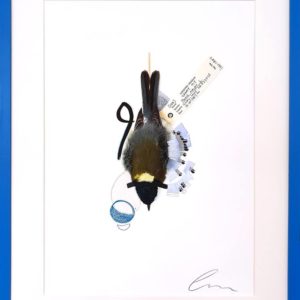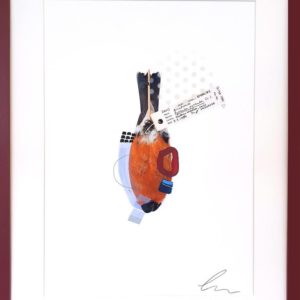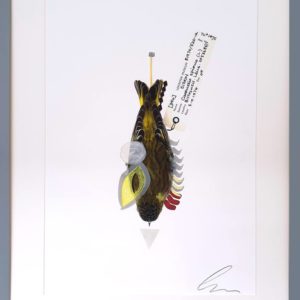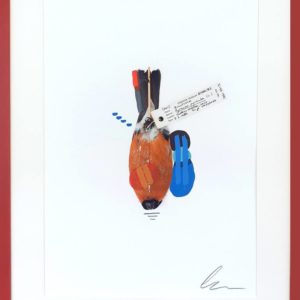The Others
 Meet the Others: Lucy Stevens
Meet the Others: Lucy Stevens
The Game Changers. The Rule Breakers. The Innovators. Discover some of the fantastic emerging talent showcasing their work at The Other Art Fair.
The Other Art Fair London artist Lucy Stevens creates multi-media artworks inspired by birdsong and natural science collections using drawing, painting, field recording and music. We spoke to Lucy about her involved process, where she gets her inspiration from and received a golden nugget of advice on how artists can get through the current period of isolation.
Tell us about who you are and what you do.
I’m a Leicester-based artist working from a studio on the edge of the Cultural Quarter at StudionAme. This is a shared studio space with over 30 other artists. It’s a really supportive, generous, and active community that I am proud to be part of. I create vibrant mixed media artworks onto paper inspired by the natural environment and wildlife. I also work in collaboration with scientists, ornithologists, and museum curators to develop my own knowledge of the natural world, to access scientific research, and to be inspired by natural science collections.
What are the major themes you pursue in your work?
I’m interested in exploring the colour palette and sounds of nature. This usually involves getting outdoors, taking lots of photographs, gathering field recordings, and visiting museum collections. This process helps me to feel closer to nature by being able to identify birds by sight and sound. It is this connection that is explored and shared with audiences throughout my work. I often use bold colours and abstract marks to visualise birdsong and calls using layers of paint and pastels. I also enjoy working collaboratively with institutions to create digital illustrations that interpret scientific research to visualise data in a creative and accessible way.
How did you first get interested in your mediums and what draws you to them specifically?
When it comes to working with sound, I was inspired by Janet Cardiff and her incredible sound walks and installations, in particular Forty Part Motet, an installation with 40 speakers to represent each vocalist. Recently, the mediums that I’ve really enjoyed working with have been wax pastel (Caran d’Ache) and household paint (Valspar tester pots). I do work with other mediums but these are my go-to artist tools and they come in such a fantastic colour-range! I also prefer to work on paper rather than canvas as I’m a bit heavy-handed when applying the medium and need a strong flat surface, especially for quick precise mark-making and notation of sounds as well as being able to work onto something that can withstand lots of layers like Fabriano Artistico Traditional White 640 gsm paper.
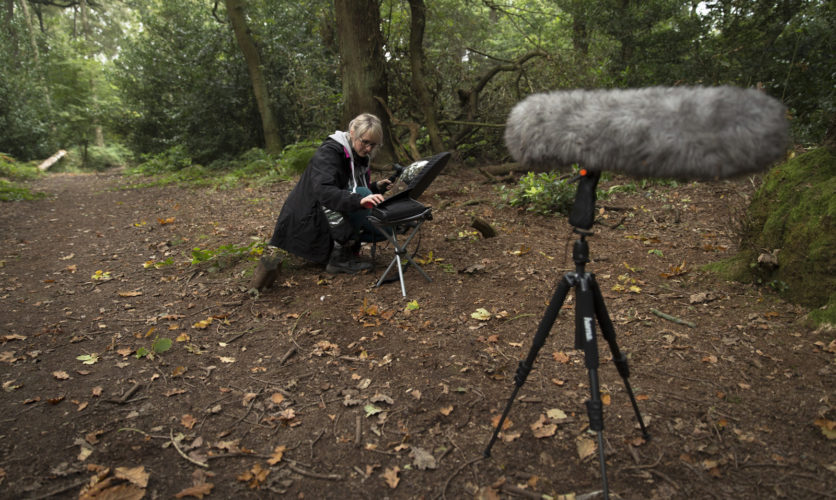
How has your style and practice changed over the years?
After completing an MA in Fine Art at Nottingham Trent University in 2007, I went onto develop a collection of soundscapes creating site-specific binaural (360-degree) audio walks and installations. I first became interested in birds when I started to explore pigeon racing and pigeon fanciers and from this, I developed sound art and installations inspired by the Pigeon post for a residency in France.
I started to visualise birdsong from my own field recordings as part of an artist residency at Fermynwoods Contemporary Art in 2015. I spent the whole residency trying out different techniques for mark-making by combining paint, ink, charcoal, pencil, pastel and it was only through continuous trial and error that I discovered a combination I was happy with. I still work with sound recordings now, mostly as a collaborative process with musicians to produce concerts inspired by birdsong. My last concert was in Feanedock Wood in Leicestershire as part of Timber Festival last year with some incredibly talented Indian classical musicians, Rishii Chowdhury and Roopa Panesar.
Over the past year, I have worked with New Walk Museum in Leicester to access the bird skins, which are part of the natural science collection. I worked with a photographer, Bill Newsinger to photograph the collections which have provided me with a great source of inspiration, particularly when investigating the order and diversity in species. I had a solo exhibition in May 2019 at The Lightbox Gallery in Leicester focused on the order, variety, and beauty of colour in nature. The work was also influenced by Werner’s Nomenclature of Colours, an early dictionary outlining colour matches across the natural kingdoms.
Can you walk us through your process? How long do you spend on one work? How do you know when it’s finished?
If I’m working on top of a photograph (of a bird skin from the museum collection) using household paint, wax pastel, spray paint etc, I’ll usually have at least four images up at once so that I can rotate between them whilst they are drying. I’m impatient and I like to work in an instinctive way, this usually involves me listening to the same music in the same order (Bee.One, then First Aid Kit’s, the Lion’s Roar). I’ll also load myself up with something sweet so I can work intensely for as long as possible. I tend to work non-stop in half-day/full day bursts, (as I work part-time), so once I’m in the studio I want to give it my all and leave feeling satisfied. I will photograph the work and develop ideas by adding marks to it on my phone whilst away from the studio. I need to have a break from the work and go back later in the week to see if there are areas that need working on or sections that need pushing back. As I’ve developed my practice I’ve learned to take more risks and embrace mistakes by making them work to my advantage.
What series or project are you working on next?
During the lockdown, I have set up a small studio space at home in the living room to work on a collection of small drawings of birds using gouache paint, oil, and wax pastel onto card and board. Once we are able to get out again I hope to be able to showcase my work at as many fairs as possible. I have been working closely with New Walk Museum to develop my ‘Bird Skins’ collection, to focus on a solo show featuring extinct or near-extinct birds. I have also been approached to create a new collection based on the natural science collections at Derby Museum, which we will hopefully pick up in autumn this year. I also have a few projects lined up with universities to work as an artist in residence with their researchers subject to Arts Council England funding.
I will be releasing a new collection of artworks, ‘Flock’ that was going to be launched at The Other Art Fair London last March very soon. This is a bold collection showcasing new bird skins from the natural science collections at New Walk Museum. Each work has individual marks and colours to compliment or mimic the colour palette and sounds of the bird and is mounted and framed beautifully in wooden coloured frames.
What is the best advice given to you as an artist?
Don’t overthink everything or be too hard on yourself. Just make a start. It might look like everyone is generating new artwork but that isn’t always the case. COVID-19 has been a difficult situation to adapt to and everyone is struggling. I read in an email from Banff Centre for Arts and Creativity something that made complete sense to explain why artists (including me) were feeling a creative block and a bit empty. Neuropsychologists would suggest that, under threat, the human brain switches to survival mode, disabling other more sophisticated parts of our thinking patterns. Fight, flee, or freeze become the priorities. However, in times of crisis, we also seek out inspiration and leadership. We have all seen countless examples of individuals circumventing our natural inclination for survival, and replacing it with creativity and innovation – finding meaning, beauty, and human connection within the chaos.
Shop artwork by Lucy and other trailblazing artists at The Other Art Fair’s Online Studios.
Introducing The Other Art Fair Online Studios, a new online platform offering art lovers around the world access to over 800 Fair artists. The Online Studios will keep our community feeling inspired, engaged, and continue to spread joy through art.
